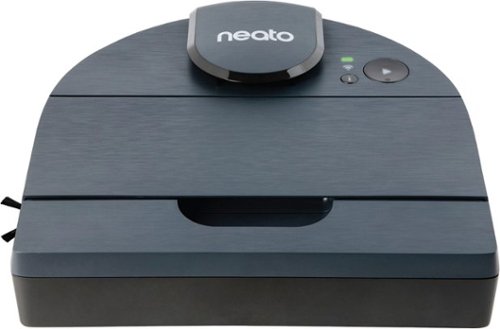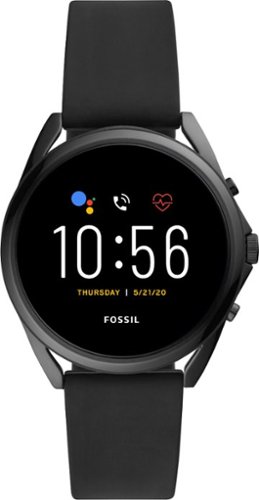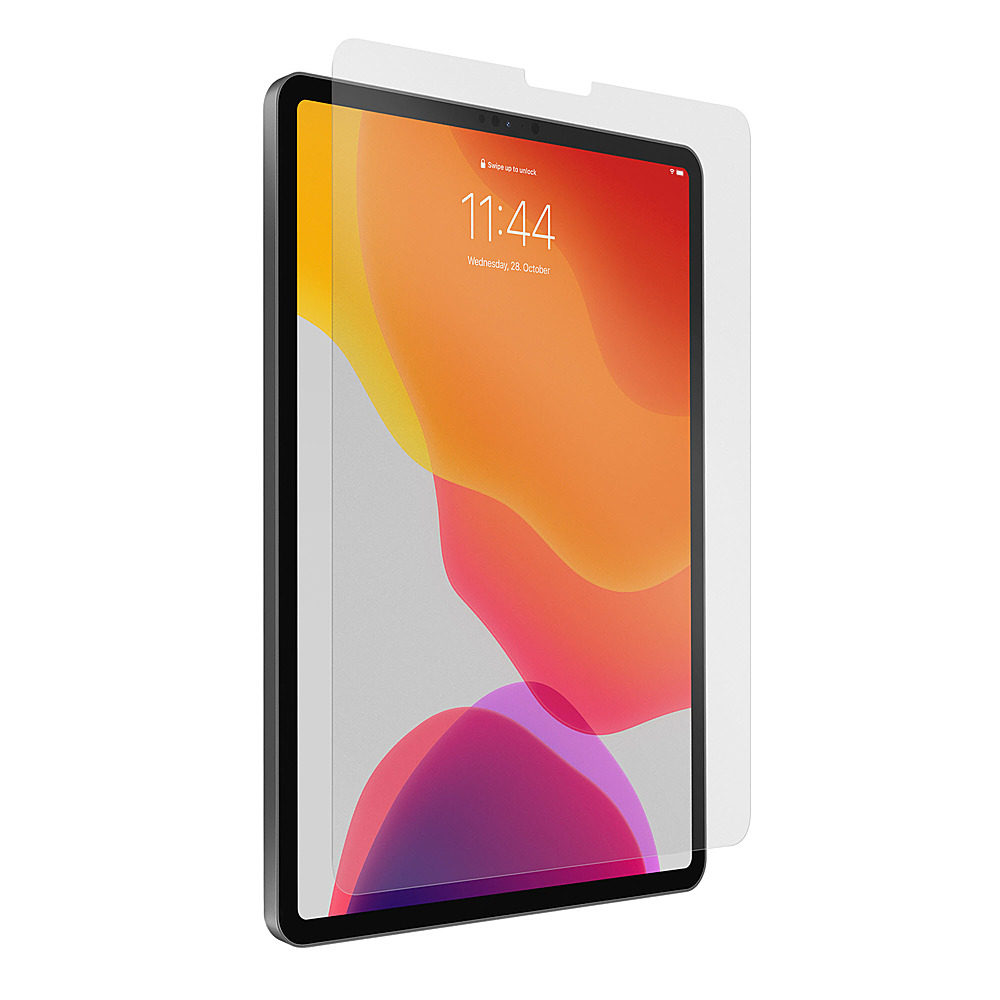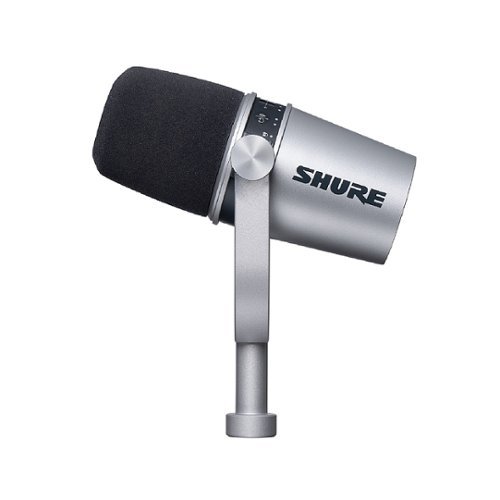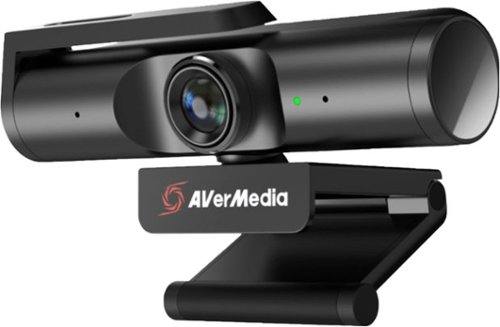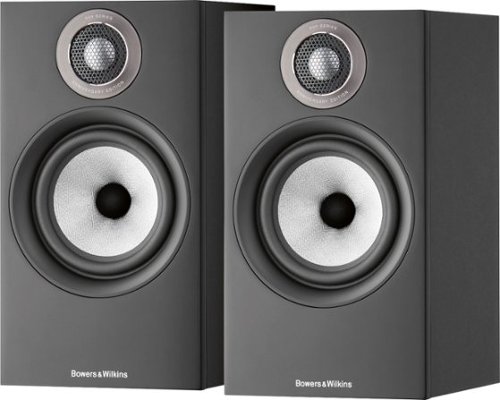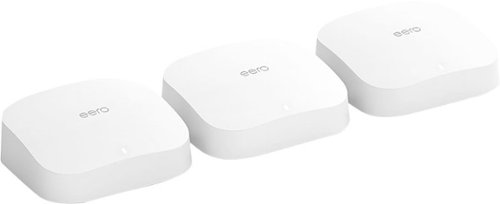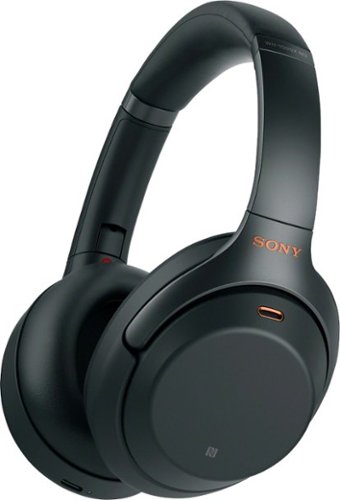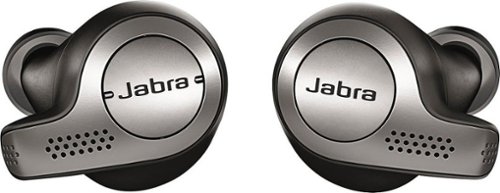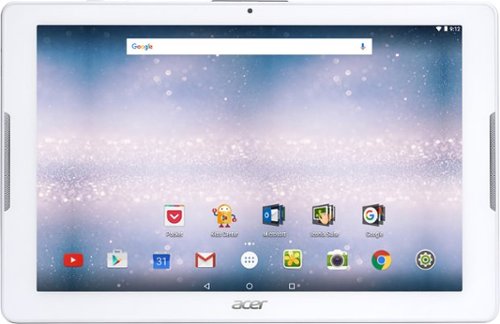TheTechNugget's stats
- Review count115
- Helpfulness votes778
- First reviewMay 21, 2016
- Last reviewApril 29, 2024
- Featured reviews0
- Average rating3.8
Reviews comments
- Review comment count0
- Helpfulness votes0
- First review commentNone
- Last review commentNone
- Featured review comments0
Questions
- Question count0
- Helpfulness votes0
- First questionNone
- Last questionNone
- Featured questions0
- Answer count4
- Helpfulness votes8
- First answerOctober 15, 2016
- Last answerSeptember 26, 2018
- Featured answers0
- Best answers1
You can't use circles to clean a square corner. That's why Neato introduced the D-shape to the industry more than 15 years ago. That D-shape allows for a brush right at the edge of the vacuum, instead of in between wheels like those round robots. This D-shape also fits an extra-large dirt bin that holds more during a cleaning session. The result? Corner-to-corner and edge-to-edge cleaning in a short amount of time. The Neato D8 has 30%+ longer runtime than the D4. That's 100 minutes of cleaning on a single charge. If your robot needs more time to finish a long cleaning run, it will auto-recharge and resume from exactly where it left off to finish the job. You don't have to babysit your robot while it's cleaning—with Neato, you can just let it run. The powerful performance you have come to expect from Neato continues with the D8. Combined with a High-Performance filter that traps up to 99% of allergens and dust particles, this is one vacuum you'll want to use every day. Switch from energy-saving Eco Mode for general vacuuming to high-performance Turbo Mode for a more powerful clean. The Neato D8 uses LaserSmart powered by LIDAR, the same technology found in self-driving vehicles, to map and navigate your home with precision, even in the dark like under furniture. Using lasers to understand where it is in your home, Neato methodically cleans from room to room in straight lines for a quicker clean, leaving your carpets with that satisfying just-vacuumed look. Worried about stairs? There's no need to be with Neato. Drop sensors automatically detect stairs to avoid falling down them and continues to learn your floorplan as you use it. Get cleaning in minutes with Neato’s hassle-free, Bluetooth-enabled setup. Using the MyNeato app, create No-Go Zones to define areas your robot should avoid like your pet's eating area and schedule Routines to clean when you want. It's an experience that makes Neato the clear choice for clean.
Customer Rating

2
Keeping it clean, but at a price...
on May 6, 2021
Posted by: TheTechNugget
from Cleveland, OH
My first use experience with robot vacuums goes back to 2017, and the iRobot Roomba that I got back then is still regularly used with no end in sight. It still performs just as well as it did on day one, and although the internal sensors are a bit sensitive to dust I really don’t have any big gripes with the product. Still, it has been four years and I was eager to see what that time has done for the development of robot vacuums.
The Neato Robotics D8 doesn’t have the standard circular footprint that many robot vacuums do. Neato “squared off” one side of the vacuum in an effort to make vacuuming in corners more plausible than a regular circular vacuum. This “D” shape is likely where the device gets its name.
The roller on the bottom of the D8 is wide—28 cm—which allows it to cover more ground in a single pass than my older Roomba does. The D8 is guided using LIDAR, instead of cameras, which allows it to accurately map the environment (more on that in a moment).
In addition to the vacuum, Neato includes 2 spare filters and a brush cleaner. I find this to be a really nice touch. The charging base has built in cable management, allowing you to conceal any spare cord. This vacuum does not self-empty at the charging base.
On its first run I immediately noticed that the D8 has what I would consider a “logical” cleaning pattern. This is different from my aging Roomba, which seems to have more sporadic cleaning paths. Generally, the D8 will outline an area to clean, then fill in the interior of that outline before moving on to the next area.
It’s ‘D-shape’ design may be a nice touch and thoughtfully intended, although in execution I didn’t find that it did a great job in corners. Yes, that shape allows it better access to corners, but it doesn’t get tightly into those corners in practice. It is certainly still better than a circular footprint, though.
Even though the D8 doesn’t self-empty at the charing station, emptying the container is very simple—it can be accessed from the top of the vacuum with a gentle pull on the bin inset. I found myself dropping crumbs and dust on the way to the garbage at first because of the orientation of the waste compartment and its connection to the rest of the vacuum, but that was a simple adjustment to make.
As a totally unscientific test, I vacuumed the area prior to the D8’s first run, and even after doing so the D8 was able to pull additional dust and debris from the carpet. I think this is a good practice before your first run of the D8 because of its limited bin size, but that limited size doesn’t seem to impact its overall performance.
The D8 can also vacuum hardwood floors, and considering it does a better job than my Roomba does with this task, that is now its sole responsibility. My living room and kitchen/dining area are on different levels, but even over floor mats and rugs the D8 did a fine job transitioning from wood to carpet back to wood again.
Battery life on the D8 is totally sufficient for my use. On its most recent run, the D8 covered 400 square feet in 70 minutes and still had around 50% battery when complete.
To a certain degree, Neato’s app is where the real magic happens. The app displays the D8’s cleaning history and allows you to create schedules for automated cleaning. It also stores maps of its cleaning history, thanks to the LiDAR Scanner, allowing you to view performance visually based upon your floor plan.
Currently, the app only supports storage of one map at a time, but support for additional maps is coming soon. It also retains map versions, which can be used to track multiple maps for the time being. The maps themselves are editable and can be adjusted with ‘no-go’ zones to make sure the D8 is only cleaning where you want it to. No-go zones are also a good way for you to help the D8 avoid problem areas, like ledges, stairs, or any other areas you find it might get stuck.
Even after 4 years, design options for robot vacuums don’t seem to be that diverse. But Neato makes a few intentional adjustments here that I think are worth considering.
One of my biggest gripes about robot vacuums is their price. In many ways I believe this to be a result of a lack of demand—not many people are going out to buy these, so the pricing hasn’t really changed over the last decade. There are certainly more budget-friendly options on the market, and herein lies the rub:
The Neato Robotics D8 retails at $699. I’m not suggesting (necessarily) that it’s not worth the money, but what the D8 does seems part and parcel with what many robot vacuums will do. If there were a less-expensive model from Neato, I’d probably start there before investing $700 on a vacuum.
Considering I am pretty loose with my spending on tech products, more so than most (I imagine), I think this pricing is a high for what you’re getting. None of that should take away from the product itself which does a fine job—but that price tag is definitely giving me pause in terms of its overall rating.
Mobile Submission: False
No, I would not recommend this to a friend.
Tech for real life. This 45mm Gen 5 LTE touchscreen smartwatch features a black silicone strap, phone-free calling functionality, 8GB storage capacity and three smart battery modes to extend battery life for multiple days. Fossil Gen 5 LTE smartwatches work exclusively with Verizon branded Android phones (not unlocked phones) on the Verizon Network with qualified Numbershare data plan. NumberShare is required to activate service on LTE smartwatches. Numbershare is available with an eligible Verizon monthly plan. Adding a smartwatch to your Verizon data plan will incur additional monthly charges. Customers must have a compatible Android Smartphone (4G or 5G) active on their Verizon account. Compatible Android smartphone must have OS 6.0 or later, excluding Go edition, with an updated version of the MVS app "My Verizon Services" (v.1.0.104.2 or later) and must be HD voice capable, have HD voice turned On and be on an eligible plan. LTE smartwatches do not support a standalone activation, only activation via NumberShare is eligible. For more detailed information, please refer to your Verizon Connected Devices plan. Fossil Gen 5 LTE Smartwatches powered with Wear OS by Google are only compatible with Verizon Android™ phones on the Verizon network. Wear OS by Google and other related marks are trademarks of Google LLC. Supported features may vary between platforms. To avoid damage to your watch, only use with included charger. Do not use a USB hub, USB splitter, USB y-cable, battery pack or other peripheral device to charge. Product should be kept more than 20cm away from implanted medical devices to minimize potential for RF interference. See product insert for full details.
Customer Rating

3
OK internals; shape & software fall short
on April 30, 2021
Posted by: TheTechNugget
from Cleveland, OH
Over the years I’ve had several different wearables—a couple of Apple Watches, Garmin fitness bands (with some “smart watch” capabilities, Motorola’s Moto 360, Mobvoi’s TicWatch C2 and Samsung’s Galaxy Watch Active 2. My experience with Android Wear watches has generally been the same—they often times are well designed, but almost always fall short in performance.
Much of this is because of the manufacturer choosing aged chipsets or insufficient RAM, and almost always the poor performance is aided by a massively underdeveloped software platform in Wear OS. The Fossil Gen 5 LTE Smartwatch that delivers a decent (but still somewhat underwhelming) hardware experience and great design, but is necessarily limited by its operating system.
For starters—this watch has a great design. I understand that Fossil was purchased by Google, but this is still a watch branded by a watch company first—and the design is about as classic as it gets. The stainless steel case is coined as black in color, but due to its sheen comes off more as a deep dark gray. There are three buttons along the side, and the crown spins as well. The band has a two-tone finish, matte black on one side and lighter gray on the other, and it would have been a really compelling watch if the band were somehow reversible. The two tone band looks amazing, but you don’t really get to enjoy it while you’re wearing it.
The 45 mm display is big and beautiful. It gets sufficiently bright, and offers an always-on mode that shows the time and the Fossil branding. The always on screen doesn’t seem to have adjustable brightness, which is kind of a pain at night time. That said, the watch doesn’t offer any sort of sleep tracking so wearing it at night may not be an issue for you at all. The watch body is noticeably larger than the display, and the display has a small bezel within the body that is more noticeable than I’d like.
Fossil equipped the Gen 5 LTE with Qualcomm’s Snapdragon Wear 3100 processor, which at this point is more than two years old. With the 4100 being released in the latter half of 2020, I’m not sure why such an old chip was included in this offering. To offset a less-than-stellar processor, the 1GB RAM definitely helps make this watch perform better than many of the previous Wear OS devices I’ve used. Wear OS has always seemed to lag, and with the Fossil Gen 5 LTE that lag is greatly reduced in many cases, while eliminated entirely in others. It’s not blazing fast, but it gets the job done.
This watch also has LTE capabilities, but works totally fine just connected via bluetooth. It’s certainly light enough to exercise with, and the silicone band provides a comfortable and secure fit even if you get a little bit sweaty. It can also be worn while swimming, if that’s your jam. But it isn’t a small watch despite its relatively light weight.
The onboard speaker and microphone are sufficient, but not great. Without holding the watch close to your head, the speaker isn’t loud enough unless you’re in a quiet environment. The microphone suffers the same fate, with less-than-stellar audio quality on the receiving end unless the watch is very near to your mouth.
Battery performance is pretty awesome, too. I’ve been able to consistently get between 1.5 and 2 days between charges, although I’m not using the device as heavily as some might. It does offer some extended battery life modes that allow you to limit connectivity/capabilities in exchange for a longer battery life. One of these modes, “Time Only” mode, turns your smartwatch into a not-so-smartwatch, which is interesting. It also chargers completely in around an hour, which is good if you find yourself with limited time to ‘top off’ your charge. Between a short charge time and fully customizable battery modes, you shouldn’t have to worry too much about time between charges.
I love the design of round smart watches, but in a practical sense I find that they fall a bit short. So much of what we engage with on a regular basis on screens is rectangular, and this shows up over and over during its use. From the PIN unlock screen, to notification text, to your phone’s typical dial pad, nothing is really designed to be used with a circular interface. And while I understand why someone would be drawn to a circular watch face, I also see how the round watch face will always limit the user experience.
I’d also argue, though, that Wear OS isn’t really designed for use the way that other smartwatch operating systems are. Relying on “Hey Google” as your interface is almost better in many ways, but because Wear OS continues to be underdeveloped, Wear OS smartwatches will always be watches first, and smart second. This is further demonstrated by the Wear OS app, which offers very limited customization for the Fossil Gen 5 LTE (most of the customization needs to be done on the watch’s frustratingly round screen).
Performance is decent. The design is sharp, elegant and timeless. Being able to take a call or get a text on your watch if you are away from your phone is really great. Heck, even having something that you can rely on to relay shorter notifications without touching your phone makes this (and many other) smartwatches make sense for a lot of people. But for $350, and considering it doesn’t offer any sleep tracking, there are certainly more compelling options on the market. It’s a gorgeous watch, don’t get me wrong, but I find it to be a much better watch than it is a smartwatch, all things considered.
Not all of this is the fault of Fossil (proper), but the same can’t be said for Google. I’ve said for years that Wear OS is massively underdeveloped, and each new Wear OS watch proves the point even more. It’s for this reason that Samsung’s Tizen OS has any sort of following—and also why even budget friendly manufacturers like Mobvoi are developing their own proprietary operating systems. It is also for this reason that Apple will be at the top of the smartwatch food chain for the foreseeable future. Wear OS just isn’t where it needs to be to make watches like the Fossil Gen 5 LTE a robust offering.
Mobile Submission: False
No, I would not recommend this to a friend.
The iPad is a great device, especially if you pair it with an Apple Pencil. A full-fledged computer, the power of a digital work environment literally at your fingertips. But one thing is still not great: the Apple Pencil slipping around on the iPad's glass surface feels unnatural and the pencil tip gets stuck on fingerprints and smudges. It simply doesn't feel right. If you're like us, you miss the accuracy of writing on paper. Paperlike, a screen protector that emulates the natural feel of paper when writing and drawing on the iPad. The most significant challenges in developing the Paperlike were finding the right friction while keeping light refractions at a minimum. And keeping the material smooth enough, so it doesn't eat up the pencil tip like sandpaper (a lot of regular matte screen protectors do that). That's why we developed a unique surface technology called Nanodots. These microbeads are evenly distributed across the foil and allow for a natural paper-feel while keeping as much of your iPad's brilliant display quality as possible. Join tens of thousands of artists, students, and notetakers around the world who love Paperlike. And finally, make your iPad the truly magnificent device it can be.
Customer Rating

4
I like it, but take your time when putting it on
on March 12, 2021
Posted by: TheTechNugget
from Cleveland, OH
I’ve always wondered about the Paperlike. I’ve seen a lot of reviews on it and never really had the drive to make the purchase. Thankfully, Best Buy provided one in exchange for the review you’re reading right now…and I’m surprised how this turned out.
I’ve been an iPad user for years, and I’ve never really been an iPad screen protector kind of guy. I do tend to put them on my phones from time to time, but tempered glass screen protectors are far easier to apply than a massive, flimsy piece of plastic. Still, I gave it a try.
For starters, it is IMPERATIVE you watch the video on Paperlike’s website as their process for applying it will help save you some grief. I tried it without and ruined the first of two provided covers. Second—get as close as you can to a dust free environment. I don’t think those exist, unless you happen to work in a clean room or lab, but those little dust flecks will drive you bonkers if you don’t avoid them. It’s almost like Paperlike provides two sheets because they assume you’ll screw up the first one.
Because I’ve been writing on iPad for so long, I’ve become accustomed to the “slippery” feeling of plastic against glass that the Apple Pencil provides. It’s annoying but not impossible to get used to. When making pixel-precise changes like in photo editing, or when trying to ‘long press’ with the Pencil, the frictionless experience can be infuriating. Paperlike fixes all of this.
Now, I won’t say it is like writing on paper—it’s most certainly not—but it’s far closer to the experience than only using the iPad and Apple Pencil with no medium between them. The most “paper like” experience for me is the feeling of the screen protector under your hand; the textured surface really DOES feel like paper which is pretty interesting.
It also makes a decent screen protector, and I like the matte finish that it gives the display. I was a huge fan of matte displays back in the day; you don’t get them so much anymore but I find screen glare to be really distracting. Now that virtually every screen is glossy, I’ve adjusted out of necessity—but this brings back some great memories.
The one thing that a matte, textured surface brings to the iPad is more surface area—and more surface area means more area for dust and dirt to get trapped. The dust hasn’t been so bad, but keeping the Paperlike clean of hand oils takes just a bit more work than a microfiber cloth on smooth glass. It’s an ok tradeoff I suppose.
These come out to $20 PER SHEET, and that’s really a great price considering what you get out of it. If you don’t like matte screens, pass on this—but if you do a lot of note taking or precise drawing, you might get some good use out of it. And, it’s not so expensive that replacing them every now and then would be problematic.
But take care when you are applying it—one little spec of dust trapped underneath might slowly drive you crazy, knowing that you can’t do anything about it.
Mobile Submission: False
I would recommend this to a friend!
The Shure MV7 is a professional-quality USB/XLR dynamic microphone, ideal for close mic applications that require vocal intelligibility with a balanced tone. A touch panel interface on the microphone itself provides control over microphone gain, headphone level, monitor mix, and muting, and the ShurePlus MOTIV™ Desktop Application allows users to save their own presets or enable auto-gain, compression, and EQ presets for easy real-time audio processing. The attractive and durable all metal design features an adjustable yoke that can be mounted onto a variety of microphone stands for flexible placement options.
Customer Rating

5
An excellent upgrade to my Samson Q2U
on March 8, 2021
Posted by: TheTechNugget
from Cleveland, OH
I recently switched to a dedicated external microphone for daily use—and as a telecommuter, you’d think that I’d settle for something with a budget price tag. I landed on the Samson Q2U, an affordable basic microphone with both XLR and USB inputs.
The Q2U is 40% the price of the Shure MV7 and honestly not even a real competitor. While the MV7 has both XLR and USB inputs, it is not something that I’d buy purely for use with an audio interface via XLR. The USB connection allows you to take advantage of the software and feature set that just isn’t available on a basic audio interface.
Shure’s design of the MV7 is similar in many ways to the more premium SM7B, and in that way delivers on ‘looking the part’ of a high quality, mainstream microphone. It also has touch controls for volume, gain and monitor mix. There is a headphone jack for studio monitoring on the back of the microphone.
When counted via USB, the MV7 is a stud of a microphone, and offers way more than my existing $100 mic and $100 audio interface. By XLR only, the MV7 is fine—but with USB, it adds compression and other adjustment to the audio track that removes the need for some post processing of recordings.
If I could go back and do it all again, I would have liked to pick up the MV7 as a good all around microphone that I could use for gaming, streaming and even the never ending onslaught of video conferences that I find myself in. The audio quality is superior to my Q2U, the software options more robust and it’s a really great looking microphone.
Mobile Submission: False
I would recommend this to a friend!
The Live Streamer CAM 513 captures astonishing 4Kp30 video that elevates content to a professional level. With Sony®️ Exmor™️ technology and AVerMedia’s precision adjustments, this plug-and-play webcam is all about the details, featuring 4K Ultra HD crystal-clear video for recording, streaming, and more. For work conferences, school lessons, live streaming, and more.
Customer Rating

3
Beginner cam for Streamer or YouTuber
on January 15, 2021
Posted by: TheTechNugget
from Cleveland, OH
COVID-19 has really brought out a new set of needs for ‘average Joes,’ a good number of whom work remotely for some or all of their workday. I’m one of those people, and while I’m no streamer I thought, hey, maybe a really high quality webcam would be a good tool to add to my current setup.
Things couldn’t be further from the truth, although I did learn a couple of key details in this process that I think could be helpful to some people.
First—if you think (like I did) that this is a good product for your everyday teleworker, you’re wrong. Nearly all users in this situation will be better served by purchasing a regular external webcam for $60 or less. The AVerMedia PW513 is a phenomenal camera that produces excellent video quality, but you have to have the resources to handle that kind of input—and your standard Zoom or Teams meetings will just downscale the quality.
Second—this is a massively wide-angle camera. I replaced an aging Logitech Webcam with this, probably between 7 and 10 years old. In that much time, camera trends are that a more wide-angle picture is preferred over less wide-angles, and I immediately noticed a stark difference when firing up the PW513 for the first time. Almost the entire room I’m in was captured in the background—and that’s a great thing if it’s what you’re after, but for me, it was more than I wanted. I made some adjustments to the room I’m in to compensate.
Third—even if you are crazy enough to buy this solely for telework, you need a Windows computer to make full use of the software. The Mac software is perfectly functional, but comes in a ‘lite’ version only unless you’re on Windows. That said, the Windows software does allow for things like crop and zoom, and although the download is currently a ‘beta’ it functioned without problems.
Fourth—the microphones are not great. They’re not bad, but when compared to the image quality, the sound pickup is not on par with the price tag. This isn’t a huge deal, as I imagine most streamers will have audio and video capture both happening through separate channels. Still, when using the onboard microphones, I was asked a few times if I was “using the built in microphone” on my laptop. The unit was only about two feet from me at the time, at eye level. From a design perspective, excluding the mics and saving a few bucks would have been nice, since I don’t think many will make use of them.
I’m sure some of you will read this and think, ‘that dude thought this was going to be a good webcam…how silly.’ And perhaps it is silly, but also a valuable lesson that sometimes products are built for a niche for a reason.
So in the end, I’d encourage you to fully investigate the system requirements for running the CamEngine software before continuing with a purchase. Still, as far as streaming is concerned, it would make a great video capture device—maybe even for reaction Youtubers and the like—provided you have the system to support it. And considering getting into that game with a basic DSLR is $500 on the low end, the price tag of $250 is not overkill in my eyes…I think this could be a great starter cam for the streamer or Youtuber alike.
Mobile Submission: False
I would recommend this to a friend!
Dell Multi-Device Wireless Keyboard and Mouse Combo enhance daily performance and productivity with this keyboard mouse combo that fits into virtually any workspace. Easily switch between 2.4GHz wireless or Bluetooth connectivity.Multi-OS compatibility. Tested and certified to work seamlessly with Dell systems.Programmable shortcut keys/buttons with customizable keyboard tilt.
Customer Rating

4
A competitive option with minimalist queues
on January 15, 2021
Posted by: TheTechNugget
from Cleveland, OH
I’m a long-time fan of Logitech peripherals, and I was drawn to the KM7120W from Dell because of it’s similarly minimalistic design that is seen on Logitech’s higher-end wireless products. I also tend to love Dell’s keyboards (at least, the ones on their laptops), so I thought there might be a chance at some excitement in the product.
The keyboard is, in some sense, a full-sized keyboard in that it contains a number pad—but the delete/home/end/insert and page up/page down keys are either compressed to the function row or to other keys. The body is fully plastic, but the materials are premium feeling. The keyboard also has a three-tone gray palette which is great for those looking for minimalist designs.
The keyboard has two height configurations, neither of which are flat; the default configuration without adjustment is adequate for me, however, I prefer a flat option. The legs that can be extended serve as ‘anti-slip’ components for the bottom of the keyboard in both configurations.
Key travel on the keyboard is really, really good—not too much, not too little. In some ways, it could be thought of as an offspring of a traditional Dell laptop keyboard and a standard Lenovo laptop keyboard; if you’re familiar with those experiences, this is as close to high praise as it comes.
It can be paired with up to three devices; two of those devices by bluetooth and the third by the included USB Type-A dongle included in the box. It is powered by two AA batteries which are also included.
The mouse has a total of 5 buttons (left and right click, scroll wheel click, and buttons along the left side where your thumb rests). It is what I would call a ‘medium-sized’ mouse, sitting firmly between the MX Master 2S and the MX Anywhere 3. Like the keyboard, the body is fully plastic but doesn’t feel particularly cheap.
The USB dongle has a magnetic storage area below a magnetically attached plate on the top of the mouse; the battery compartment for the single AA battery (included) is also under this plate.
Because of its plastic build, the mouse is very lightweight and feels comfortable to use for extended periods of time. Dell did a good job designing something that would appeal to high-end mouse enthusiasts.
The devices are clearly intended for use with Windows machines, as the Dell Peripheral Management software is a Windows-only program at this time. That said, the mouse and keyboard work without issue on macOS.
The software allows you to customize some buttons on the mouse and keyboard. It is straightforward and easy to understand, but I would like to see some additional mapping/configuration options for more than just a subset of the buttons/keys. The keyboard’s function keys (which double as media and other controls) can be customized, as can the thumb and center click buttons on the mouse.
There are options for standard system commands, as well as customizable keypresses (for instance, I configured the center click on the mouse for Windows + Shift + S for the Windows Snip and Sketch software). One minor complaint—the scroll direction on the mouse cannot be switched within the software, although you can still accomplish this with some clever registry adjustments if you want to get your hands a little dirty.
The pair of devices comes in at $89.99, which is a good price all things considered. It’s clear that this product will compete with some mouse/keyboard combo options from Logitech, but the design language used here make this a good choice for someone who is looking for an inexpensive minimalist keyboard and mouse.
Mobile Submission: False
I would recommend this to a friend!
The 607 S2 Anniversary Edition combines power and clarity in the most compact form for smaller spaces. Continuum mid-bass drive units provide clarity for singers and surprisingly robust bass lines while Decoupled Double Dome Tweeters create an enveloping sense of space. Featuring upgraded crossovers for even more transparency and a unique trim-ring to celebrate this milestone, the 607 S2 Anniversary Edition is the most sophisticated, affordable compact bookshelf loudspeaker Bowers & Wilkins has ever made. The 607 S2 Anniversary Edition is the most compact bookshelf speaker in the 600 Series Anniversary Edition range of products. Over the last 25 years, the 600 Series has been our most affordable performance range of loudspeakers, and we’re celebrating our love of sound with acoustic improvements to the crossover network for overall greater levels of clarity and smoother high frequencies so you can enjoy a compelling listening experience across the range of products.
Posted by: TheTechNugget
from Cleveland, OH
Yes, I know—the title is obvious to those who are used to higher-end audio equipment. The reality is, there is no comparison between a run-of-the-mill bluetooth speaker and a finely tuned vented speaker like the 607 S2 Anniversary Series speakers from Bowers and Wilkins. And so you may be asking—why bring up bluetooth speakers? After all, the S2 speakers are intended as proper stereo speakers, perhaps in an existing surround-sound environment. But, if you already have a surround sound system, I don’t know that you’d be looking for just two speakers to add. Instead, the S2 could be used as a standalone pair, provided you have the proper equipment to pass the audio through them. Personally, I added these as a pair of stereo speakers on my desk, which provides incredible quality audio during work and play.
This short review assumes you have the equipment required in addition to the speakers…just keep in mind, you will need more than just these speakers to get things working.
We live in a world where music comes either from our car stereos or from a relatively small speaker sitting somewhere in a room, connected by bluetooth. I have countless bluetooth speakers, some good and some not so good. I have a decent soundbar as well that provides a full sound when immersive is required—but it is far from the sound that I found the S2 can pump out. Also, there is something to say for stereo sound, which is something you don’t quite get with a bluetooth speaker.
I have about 20 songs on a playlist that I run through when testing speakers and headphones alike. My standard workflow goes like this: start a song, listen for a bit, move on to the next song. I know these songs well, and have historically found that they are representative of enough styles and genres to provide a decent rounded listening experience. But that workflow changed significantly when I tested the 607 S2 speakers.
For starters—the acoustic refinement that was done in the design of these speakers make for a very immersive experience. They are smaller speakers, so they didn’t look too big on my desk—and the output coming from the two areas on each desk didn’t sound like it was only coming from those areas; instead, the desk itself became a speaker, projecting a wall of sound that didn’t have a single point of origin. As I’ve gotten used to a standard bluetooth speaker, this was a refreshing and enjoyable reminder of how much I love high quality audio.
When I began working through my playlist, I didn’t play a short excerpt and move on. Instead, I sat and I listened. The quality of the sound was so good and so immersive that I was lost in the experience. This hasn’t happened to me in quite some time.
I also learned things about my playlist. I found songs that are redundant in purpose and can therefore be removed. I found other songs that were unremarkable from an audio perspective, and I also found songs that had elements that I had never before heard. That is a testament to these speakers; these are the songs that I know better than all other songs.
It is worth mentioning (although should not be a deterrent) that the bass output of these speakers is not significant. The soundstage in general is phenomenal, but a good subwoofer connected through your receiver will make these speakers go even further. They do a fine job on their own, and they will certainly do the trick for light listening and everyday use, but these speakers are not designed to be supremely bass heavy. Mids and highs are no problem at all, thanks to the tweeters on each unit. Audio is clear, and elements of that audio is separate and audible as unique components of the larger sound.
The speakers look great, too, and the included (and optional) speaker covers are secured magnetically to the front…although I prefer leave them off.
This pair of speakers comes at a price—$700 to be exact. That’s not a small pill to swallow, but they sound incredible and if you’re heavily invested in your audio setup, I think these could be a good addition for you. I love them on my desk as my every day audio output—they look great, sound great, and are sure to last for many years to come.
Mobile Submission: False
I would recommend this to a friend!
eero Pro 6 delivers premium Wi-Fi 6 performance. The 3-pack Wi-Fi 6 system supports speeds up to a gigabit and coverage up to 6,000 square feet. So you can say goodbye to dead spots and buffering. Work, play, video conference, and stream from anywhere in your home—even when the whole family is online. Set up eero in minutes and get automatic updates, a built-in Zigbee smart home hub, and more. Powered by TrueMesh, eero optimizes your wifi to work for your space and supports 75+ devices.
Customer Rating

5
Not cheap...but EASY and FAST. Worth the price.
on November 12, 2020
Posted by: TheTechNugget
from Cleveland, OH
#Eero Pro 6 Review
I have a love hate relationship with network equipment. The tinkerer in me likes to get and try new things, and figure out how they work. I’m no network engineer by any stretch of the imagination, but I get some basic things about networking, just enough (I think) to be relatively capable when it comes to trying new things. This is part of the reason I had a separate available network at home for testing the Eero Pro 6 Mesh Wi-Fi system.
Regardless of that ‘extra network’ I had lying around, the app experience with the Eero Pro 6 takes on a lot of the heavy lifting that I’m both reminiscent and bitter about with whole-home Wi-Fi systems I’ve encountered in the past.
Simplicity seems to be the goal with this system; it comes with 3 identical units, any of which can act as the ‘base’ unit, while the other two are used as mesh Wi-Fi access points which can be spread throughout your house. Each unit also has two gigabit ethernet ports, allowing connection of other local devices that may not have wireless capabilities.
The devices themselves are a clean, glossy white material that, while may get dirty or dingy over time, do well to hide fingerprints and dust. Along with the three simple devices are USB-C power cables that connect to the back of the units to power them; it’s nice to see USB-C used here and not a DC barrel connector.
To set them up, you will have to download the Eero mobile app to walk through the configuration. Creating an account is easy, and setting the devices up is just as easy. If this is replacing your existing home wireless, you can use the same network name and credentials, otherwise, you can set up a new wireless network via the app.
The app itself is clean and simple, but lacks the data that I like to see when I look at my home network connections. It is simple enough that folks with little-to-no networking knowledge should be able to navigate it; you can create device profiles to restrict access and content based on that profile, look at data usage by device over time, connect to Amazon to act as a smart home hub, and administer the system in general.
This is one of the easiest and fastest whole-home Wi-Fi systems I’ve ever used. The performance is fantastic, thanks to the tri-band mesh Wi-Fi with a dedicated backhaul, along with Wi-Fi 6 which offers really great bandwidth if you have modern devices in your home that can take advantage of those features.
Also available from Eero, aside from basic Wi-Fi and routing, are two subscription options for additional features. Eero Secure is only $3 per month and offers some basic security features, while Eero Secure+ is $10 per month and bundles advanced security features and third-party software subscriptions. These subscriptions—1Password’s password manager, encrypt.me VPN service and malwarebytes antivirus, are included in the monthly cost of Eero Secure+, and if bought separately would cost more than the Eero Secure+ subscription fee. And, if you pay annually, you essentially get two months of service for free regardless of which subscription you choose.
The Eero Pro 6 is not a cheap whole-home Wi-Fi system, coming in at $600. But, there aren’t many mesh Wi-Fi systems with a dedicated backhaul and Wi-Fi 6 (although there likely will be in the next year or two), which contribute significantly to your wireless network speeds. So, if you have a high-bandwidth home like I do—multiple kids, many MANY devices, and if you have a super-fast internet connection (gigabit or more), you stand to benefit most from a robust system like this. Aside from the weird absence of data within the app—something that can be improved with software updates—I have absolutely no complaints about the system as a whole. Setup is simple, management is easy, and my home wireless network speeds are as fast as they have ever been.
Mobile Submission: False
I would recommend this to a friend!
Discover ScanWatch, a hybrid smartwatch that detects heart health conditions and helps improve overall fitness. Nested in a high-end watch, state-of-the-art technology has been carefully selected to create Withings most health-oriented watch to date. Developed with cardiologists, this clinically validated hybrid smartwatch can alert a user to a possible case of atrial fibrillation (Afib). ScanWatch also offers in-depth activity and sleep tracking, water resistance to 5 ATM (165 ft), and an exceptional battery life of up to 30 days before it needs to be charged.
Customer Rating

3
Solid product...but...not sure it's competitive
on October 21, 2020
Posted by: TheTechNugget
from Cleveland, OH
This watch intrigued me originally because of its price tag, which matches that of the latest Apple Watch SE. Yes, I know this isn’t a competitor to the Apple Watch, but the contrast between those two devices draws me in.
The ScanWatch comes in a wool pouch that resembles a soft glasses case, along with its proprietary pin-style charging cable. The stainless steel watch has classic styling with a small circular cutout in the top half of the face for the digital display. Only 5-minute tick marks are present on the face (no numbers), and the bottom half of the face maintains symmetry with the top circular cutout; in the bottom cutout is another analog dial that shows your activity in terms of percent of goal. The crown on the side of the watch serves as navigation for the smart components, where rotation navigates menus and pressing the crown selects items in those menus.
This is not a full smart watch but has a good number of features and sensors. There is no onboard speaker, but the vibration motor works well, especially as a sort of silent alarm for waking up in the morning. The watch supports activity tracking (GPS, steps, elevation, distance, workouts), as well as measuring heart rate, ECG and Sp02 levels, along with sleep tracking. The smart notifications are just that—notifications—and can’t really be interacted with from the watch; you can read a text message as it is scrolled across the small digital screen, but you can’t reply, nor can you dismiss an incoming phone call. The watch also features Quicklook which activates the digital screen when raised.
The battery life is great, although it shouldn’t be a surprise as the small black and white display doesn’t get much use except for quick glances of information. During an eight-day testing period, the fully charged battery depleted only to 40%. Withings indicates a battery life of up to 30 days is possible.
An integral component of this watch is the Health Mate mobile application available on Android and iOS. It presents a very clean and bright interface and is a joy to use; it integrates with Apple Health and allows for some customization of features (for instance, when long pressing the crown you can launch the ECG, Sp02 or workout modes on the watch). And, while I don’t see this app replacing your existing health app, it does provide a great set of tutorials for first time users of the watch.
It is no surprise, but this watch is a good watch—because it is a watch first, and smart second. You benefit from this with great battery life, but if you’re used to a more typical smart watch, this will be a step down in features.
I imagine someone who is a relatively light smartphone user would like a device like this, as it may help to reduce the number of times you pick up your phone throughout the day, thanks to being able to glance at notifications as they arrive. That said, an Apple Watch could be used in exactly the same fashion, so there has to be a specific market for a device like the ScanWatch.
I’m sure I’ll be criticized for comparing this to the Apple Watch SE. I’m an Apple Watch user myself, but I also have a small collection of ‘analog’ watches that I’ve accumulated over the years—so I get the attraction to a nice-looking timepiece. And that’s where, if anywhere, the ScanWatch has to fit: as a nice timepiece. At $279, it’s not too expensive for a nice watch, and it also happens to include an array of modern smartwatch sensors.
If you happen to fit into the category of people that would benefit from this kind of device, then I suppose this is worth considering, but, it would be hard for me to justify this over more robust offerings at a similar price point.
Mobile Submission: False
No, I would not recommend this to a friend.
Make the most of your tablet with the ZAGG Pro Stylus. Take notes, sketch, mark-up documents, swipe through pages, and just do more. With a eight-hour battery life, palm-rejection technology, and compatibility with apps that support Apple Pencil, you’re ready for anything. Compatible with Apple iPad Pro 12.9" 6th Generation (2022) 5th Generation (2021), 4th Generation (2020), 3rd Generation (2018); iPad Pro 11" 4th Generation (2022), 3rd Generation (2021), 2nd Generation (2020), 1st Generation (2018); iPad Air 10.9" 5th Generation (2022), 4th Generation (2020); iPad 10.2" 9th Generation (2021), 8th Generation (2020), 7th Generation (2019); iPad 9.7" 6th Generation (2018); and iPad mini 6th Generation (2021), 5th Generation (2019).
Customer Rating

4
Extra functionality, slightly different workflow
on October 10, 2020
Posted by: TheTechNugget
from Cleveland, OH
Zagg Pro Stylus (Best Buy Review)
The Zagg Stylus Pro is an Apple Pencil competitor that seems to be worth its salt. It combines a ‘traditional’ stylus (like you used to see before Apple Pencil became a thing) with a tip that is compatible with Pencil-compatible iPads.
The packaging is light and simple, and the instructions provided leave something to be desired. I had some initial issue powering the stylus and getting it to connect to my third generation iPad Pro, and found that it was better to completely remove my existing Apple Pencil from bluetooth devices then use the Zagg stylus. At the time of experiencing these issues, the support site wasn’t live yet on Zagg’s website for this particular product, which was frustrating.
From a design perspective, it is a stark difference from the Apple Pencil: two-tone gray and black instead of all white, with a power button along the side near the ‘traditional’ stylus end. The tip looks a little crayon-like, but otherwise the stylus looks low-profile and minimalist. It certainly feels less dense than the Apple Pencil, so maybe a bit lower in quality, but it’s not a deal breaker.
Using the Zagg stylus is an experience on par with the Apple Pencil, however, the workflow of using it is a bit different. First, it has to be powered on (instead of being immediately on after removing from the side of the iPad), and charging is done via an included USB type-C port cleverly hidden beneath a sliding component at the traditional stylus end. This sliding component also makes a decent fidget toy. The Zagg stylus also doesn’t support the ‘double tap’ function that the Apple Pencil does, but I often times find myself more frustrated by that feature than excited by its presence.
Most notably (and excitingly for me) is the traditional stylus end—one of my biggest complaints about the Apple Pencil is the inability to use it to navigate all aspects of the iPad user interface. Zagg combats this with the old-school rubber-tipped stylus at the “eraser” end.
So, it’s not an Apple Pencil—but in some ways, that is what makes it great. At $69–versus $129 for the Apple Pencil—and with added functionality in the ability to fully navigate your iPad with both ends of the stylus, it’s a no-brained. Sure, it does have to be powered on and charged independently, which is less ‘streamlined,’ but it’s a small price to pay for a good-looking product that gives you a little more functionality.
Mobile Submission: False
I would recommend this to a friend!
TheTechNugget's Review Comments
TheTechNugget has not submitted comments on any reviews.
TheTechNugget's Questions
TheTechNugget has not submitted any questions.
TheTechNugget's Answers
Take your playlist with you by using these noise-cancelling Sony headphones. Their 40mm drivers with liquid crystal polymer diaphragms fill your ears with booming audio to immerse you in songs, and they're ergonomically designed to provide comfort during extended listening sessions. These Sony headphones have a proprietary noise-cancelling processor, so you can immerse yourself in the music.Industry Leading Noise Cancellation. *As of August 30, 2018. According to research by Sony Corporation measured using JEITA-compliant guidelines. In headband-style of wireless noise-canceling headphones market.
How are they for working out for example on a treadmill? Do they stay on your head well? What about sweat? Does that impact the quality or fit
These probably aren't ideal for use on a treadmill...I would imagine you'd get pretty warm and the cups may not hold up to sweat well. Check out the Jabra Elite 65t truly wireless buds; great fit and great noise cancellation and really good for more active users.
5 years, 7 months ago
by
TheTechNugget
Enjoy superior sound and voice quality with these Jabra Elite wireless headphones. Integrated controls let you answer calls, adjust the volume or pause music with the touch of a button, while the included carrying case doubles as a charging station. External ambient noise keeps you aware of your surroundings, while a background noise filter delivers crisp, clear voice calls. With Bluetooth connectivity, these Jabra Elite wireless headphones are easy to pair to a mobile device.
Does they play loud. Most earbuds doesent play very loud. l had Jaybird x3. Good sound bit not so loud
I thought these were probably louder than most earbuds I've tried, and with very little distortion in the sound at higher volumes. Also, there is very little sound leaking at 70-80% volume, so others around you shouldn't be too annoyed at higher volumes.
6 years, 2 months ago
by
TheTechNugget
Enjoy superior sound and voice quality with these Jabra Elite wireless headphones. Integrated controls let you answer calls, adjust the volume or pause music with the touch of a button, while the included carrying case doubles as a charging station. External ambient noise keeps you aware of your surroundings, while a background noise filter delivers crisp, clear voice calls. With Bluetooth connectivity, these Jabra Elite wireless headphones are easy to pair to a mobile device.
How well do these stay in your ears during an extreme workout? Doesn't look like there is anything to hold them in!
I was pleasantly surprised by the fit--they don't seem to go anywhere for me, and I was trying to shake them out of my ears. I had the same reservations--no ear fins, no way for them to stay secure. If they fit your ears like they do mine, they're not going anywhere.
6 years, 2 months ago
by
TheTechNugget
Browse the internet or play your favorite apps on this Acer tablet. It runs on an Android operating system and is powered by a quad-core 64-bit processor for full functionality. Google Mobile Services and Microsoft Office Suite are preloaded on this Acer tablet for out-of-the-box work or play capabilities, and DTS-HD Premium Sound lets you enjoy videos.
THIS Acer - Iconia One 10 - 10.1 - Tablet - 32gb - White IN SALE in best buy, IS NEW OR USED?
This is definitely a new item, but make sure you read up on your reviews on this one, I certainly wouldn't recommend it.
7 years, 6 months ago
by
TheTechNugget

